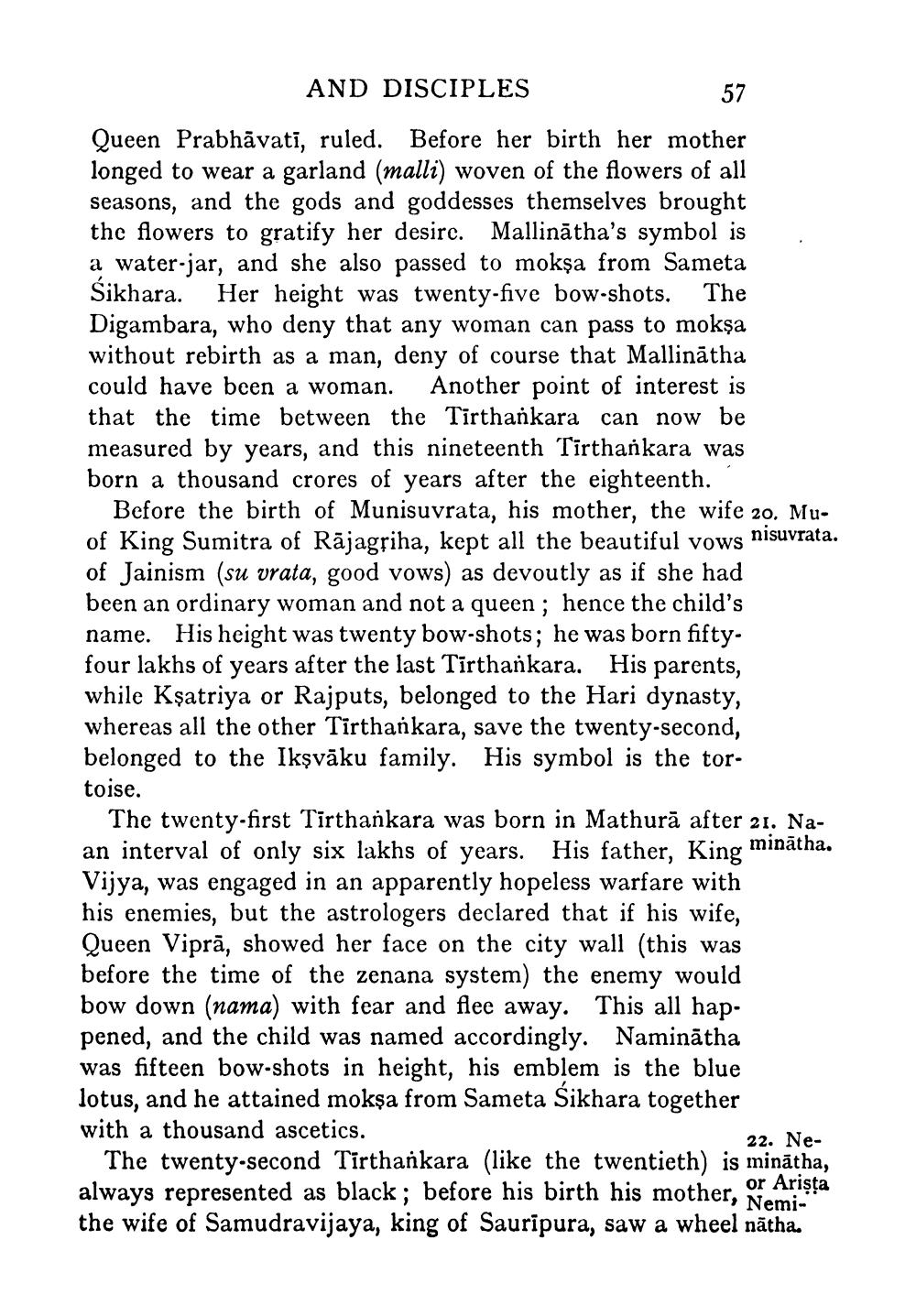________________
AND DISCIPLES
Queen Prabhāvati, ruled. Before her birth her mother longed to wear a garland (malli) woven of the flowers of all seasons, and the gods and goddesses themselves brought the flowers to gratify her desire. Mallinātha's symbol is a water-jar, and she also passed to mokşa from Sameta Sikhara. Her height was twenty-five bow-shots. The Digambara, who deny that any woman can pass to mokşa without rebirth as a man, deny of course that Mallinātha could have been a woman. Another point of interest is that the time between the Tirthankara can now be measured by years, and this nineteenth Tīrthankara was born a thousand crores of years after the eighteenth.
Before the birth of Munisuvrata, his mother, the wife 20. Muof King Sumitra of Rājagņiha, kept all the beautiful vows nisuvrata. of Jainism (su vrata, good vows) as devoutly as if she had been an ordinary woman and not a queen; hence the child's name. His height was twenty bow-shots; he was born fiftyfour lakhs of years after the last Tīrthankara. His parents, while Ksatriya or Rajputs, belonged to the Hari dynasty, whereas all the other Tirthankara, save the twenty-second, belonged to the Iksvāku family. His symbol is the tor toise.
The twenty-first Tirthankara was born in Mathurā after 21. Naan interval of only six lakhs of years. His father, King minātha. Vijya, was engaged in an apparently hopeless warfare with his enemies, but the astrologers declared that if his wife, Queen Viprā, showed her face on the city wall (this was before the time of the zenana system) the enemy would bow down (nama) with fear and flee away. This all happened, and the child was named accordingly. Naminātha was fifteen bow-shots in height, his emblem is the blue lotus, and he attained mokşa from Sameta Šikhara together with a thousand ascetics.
22. NeThe twenty-second Tirthankara (like the twentieth) is minātha, always represented as black; before his birth his mother, & Arista
, Nemithe wife of Samudravijaya, king of Sauripura, saw a wheel nātha.




